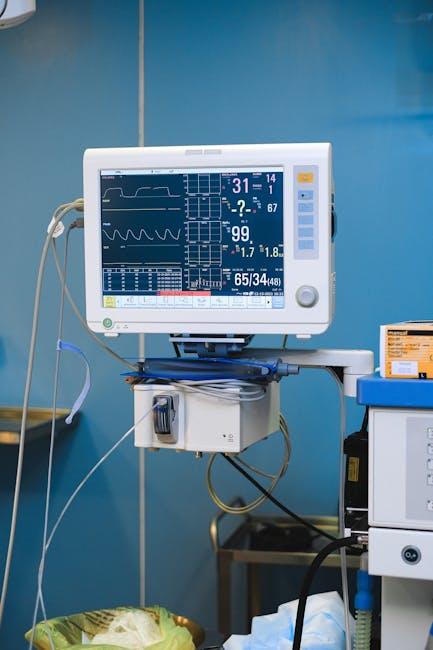
Case Report: A Case Series on Heart Rate Variability During Dental Treatment with Vasovagal Reflex – Frontiers
Understanding the cardiovascular dynamics during dental procedures is crucial, especially when patients experience vasovagal reflex, a common cause of sudden fainting triggered by stress or pain. This article explores a comprehensive case report series focused on heart rate variability (HRV) monitoring during dental treatments complicated by vasovagal syncope, based on cutting-edge research published in Frontiers. Discover how HRV serves as a valuable biomarker to anticipate and manage vasovagal episodes, enhance patient safety, and improve clinical outcomes in dentistry.
Introduction: Why Monitor Heart Rate Variability in Dental Settings?
Dental treatment can induce anxiety and physiological stress in many patients, sometimes leading to a vasovagal reflex — an autonomic nervous system response that causes a sudden drop in heart rate and blood pressure, resulting in fainting. Monitoring heart rate variability, a measure of autonomic nervous system activity, allows clinicians to better understand the subtle cardiovascular changes preceding vasovagal events.
This case report series sheds light on how continuous HRV monitoring during dental procedures can not only detect but also predict impending vasovagal syncope episodes, offering a blueprint for safer dental care.
What is Vasovagal Reflex and Its Impact on Dental Patients?
Vasovagal reflex, or vasovagal syncope, is the most common type of fainting, resulting from an exaggerated autonomic reaction that reduces cerebral perfusion. In a dental chair, triggers can include:
- Needle phobia or injection pain
- Psychological stress and anxiety
- Prolonged immobility
- Physical stimuli such as gagging or suction
The onset of vasovagal syncope during procedures can complicate treatment and potentially cause injury. Hence, understanding cardiovascular signals like HRV offers a preventive advantage.
Heart Rate Variability (HRV): A Window Into Autonomic Nervous System
HRV measures the variation in time intervals between heartbeats, reflecting the balance between the sympathetic (fight or flight) and parasympathetic (rest and digest) nervous systems. In clinical dentistry, HRV can:
- Indicate patient stress and anxiety levels
- Predict vasovagal reflex onset
- Guide intervention timing and methods
Key HRV Metrics Analyzed in the Case Series
| HRV Parameter | Description | Clinical Relevance |
|---|---|---|
| SDNN | Standard deviation of NN intervals | Overall autonomic activity |
| RMSSD | Root mean square of successive differences | Parasympathetic activity |
| LF/HF Ratio | Low-frequency to high-frequency power ratio | Sympathovagal balance |
Summary of the Case Series: Heart Rate Variability Patterns During Vasovagal Events
The Frontiers case series described multiple patients undergoing routine dental procedures who exhibited vasovagal reflex symptoms. Key observations included:
- Pre-fainting HRV shifts: A notable increase in parasympathetic tone (elevated RMSSD) and decrease of sympathovagal balance (low LF/HF ratio) minutes before syncope.
- HRV as an early warning system: Changes in HRV parameters consistently preceded clinical signs like pallor, sweating, and dizziness.
- Recovery trends: Post-event HRV normalized as patients regained consciousness and vital stability.
Illustrative Case Example
Patient: 28-year-old female with mild dental anxiety undergoing restorative treatment.
Signs: Reported dizziness and nausea mid-procedure.
HRV Findings: Marked increase in RMSSD and drop in LF/HF ratio 3 minutes before symptoms.
Outcome: Treatment paused; patient reclined and given oxygen; rapid symptom resolution confirmed by HRV normalization.
Benefits of HRV Monitoring in Dental Practice
Incorporating HRV technology into dental care offers multiple advantages, such as:
- Early Detection: Identifies autonomic imbalance before vasovagal episodes become clinically apparent.
- Personalized Care: Enables tailored approaches to manage anxious or at-risk patients.
- Enhanced Safety: Reduces incidences of sudden fainting and associated trauma.
- Objective Data: Provides quantifiable metrics to understand patient stress better.
Practical Tips for Dental Professionals
To leverage heart rate variability insights effectively, dental clinicians should consider the following strategies:
- Implement HRV Monitoring Devices: Use wearable or chair-side HRV sensors during procedures.
- Recognize Early Signs: Train staff to interpret HRV trends alongside clinical symptoms.
- Minimize Triggers: Provide calming environment and gentle techniques to reduce patient stress.
- Prepare Emergency Protocols: Have clear steps to manage vasovagal syncope safely.
First-Hand Experience: Insights from Dental Practitioners
Several dentists who incorporated HRV monitoring in their clinic reported improved patient outcomes and reduced procedural delays. One dentist noted:
“Being able to see early changes in heart rate variability gave me the confidence to pause treatment and comfort the patient before they even felt faint. It has fundamentally changed how I manage anxious patients.”
Conclusion: Embracing HRV for Safer Dental Treatments
This case series underscores the promising role of heart rate variability analysis in recognizing and managing vasovagal reflexes during dental care. By adopting HRV monitoring practices, dental professionals can anticipate physiological stress responses, intervene promptly, and mitigate risks of syncope. The integration of HRV technology heralds a new era of patient-centered, safe, and anxiety-aware dental treatment.
As research expands, further standardization of protocols and broader adoption of HRV measurements can revolutionize how dental anxiety and vasovagal episodes are handled—making dental visits safer and more comfortable for all patients.


